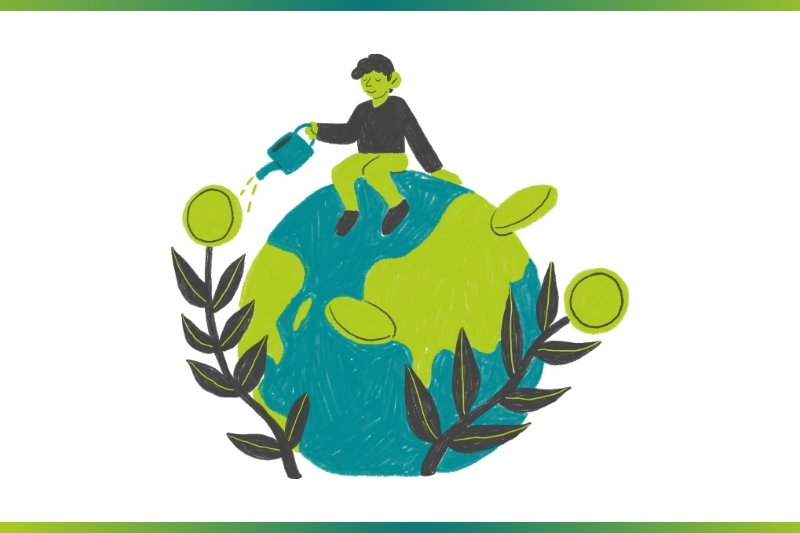
A Step-by-Step Guide to Conducting an Effective CSR Impact Assessment
Chrysalis Services
A Real-World Look at How to Do a CSR Impact Assessment Right
Starting a CSR initiative? That part’s usually the easiest. The real challenge — and where it truly counts — is figuring out whether all that effort is changing anything.
More and more businesses are beginning to realize this. CSR is no longer just a checkbox for annual reports or a branding exercise. It’s becoming a serious, long-term commitment to doing right by people and the planet. But that also means it’s time to ask some harder questions: What’s the real outcome of what we’re doing? Who is benefitting — and who might not be?
This is where CSR impact assessment becomes invaluable. It helps you move past assumptions and good intentions to clearly understand what your CSR efforts are achieving — or missing. And not in abstract numbers, but in terms of real, tangible changes in people’s lives and communities.
So how do you actually go about it? Here’s a practical guide — one that doesn’t just live on spreadsheets, but speaks to real-world CSR.
Step 1: Clarify What You’re Trying to Achieve
Before measuring impact, you need to define it. What was your CSR program meant to accomplish — and for whom? Be specific. Are you trying to improve learning outcomes in rural schools? Create job pathways for women? Reduce waste in your supply chain?
Your goals must be rooted in real-world needs. This is where it’s important to revisit your community context and ensure your interventions were aligned to begin with. A strong CSR impact assessment always starts with purpose clarity.
Step 2: Map Your Stakeholders
Impact doesn’t happen in a vacuum. Who are the people or groups affected by your CSR efforts? Think beyond the immediate beneficiaries — include local leaders, partner NGOs, employees, vendors, and even critics.
Stakeholder mapping helps you understand not just what is changing, but for whom. This step also prepares you for more inclusive assessments, where real voices shape the understanding of impact.
Step 3: Identify What to Measure (and Why)
Now comes the design phase. What indicators will you track? This depends on your program. For example:
- In an education program: enrollment, attendance, learning outcomes, confidence levels.
- In a livelihood initiative: income increase, job stability, skill adoption, social mobility.
- In an environmental program: waste reduction, water savings, biodiversity restoration.
Don’t just focus on the easy-to-measure. The most meaningful insights often come from qualitative indicators — lived experiences, behavioural shifts, or even community narratives.
Step 4: Choose Your Methods Wisely
A good CSR impact assessment blends data with dialogue. Here are a few methods we regularly use at Chrysalis Services:
- Surveys and interviews to gather firsthand feedback.
- Focus group discussions to dive deep into perceptions and unintended effects.
- On-ground observations to understand context and nuance.
- Social Return on Investment (SROI) models to quantify value created.
- Comparative analysis across baseline and current data.
Each method brings a different layer of insight. When combined, they build a complete picture of what’s really happening on the ground.
Step 5: Get on the Ground — Literally
You can’t assess community impact from a conference room. You have to go where the change is supposed to happen.
At Chrysalis, this is our non-negotiable. Our teams sit in village meetings, walk through project sites, talk to participants — not just partners. This level of engagement often surfaces truths that reports alone miss: who was left out, which effort quietly succeeded, what’s shifted in people’s day-to-day realities.
Step 6: Make the Results Actionable
This isn’t an academic exercise. The best CSR impact assessments lead to better decisions. That means going beyond “what happened” to asking “what now?”
Use your findings to:
- Refine your future programs.
- Strengthen implementation partners.
- Allocate resources more efficiently.
- Share learnings transparently.
This is how impact measurement becomes a tool for growth — not just validation.
Step 7: Tell the Whole Story
Once you’ve assessed your impact, tell it honestly. Don’t shy away from complexity. Funders, boards, and communities increasingly value transparency over perfection. Talk about the wins, yes — but also the gaps, learnings, and the road ahead.
This level of honesty builds trust. And it sets the stage for more resilient, community-rooted CSR strategies.
Why This Matters Now
Today, CSR isn’t about charity. It’s about accountability. And in a time when stakeholders expect proof of purpose, a CSR impact assessment is more than a report — it’s your credibility on paper.
It’s also your opportunity. Because when you truly understand your social footprint, you’re empowered to scale what works, course-correct what doesn’t, and show up as a business that doesn’t just give — but listens, learns, and leads.
Let Chrysalis Services Be Your Impact Partner
We know the terrain. Our team has walked dusty lanes, facilitated hundreds of community conversations, and helped corporates decode the story behind their data. At Chrysalis Services, our CSR impact assessments are designed to bring clarity, depth, and direction to your CSR journey.
If you’re ready to go beyond checklists and create measurable, meaningful change — let’s talk.
Because impact deserves to be seen, not just assumed.
